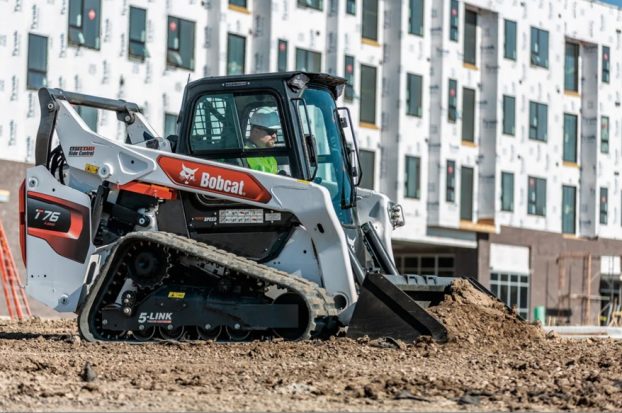
This story was originally published in the 2023 Summer issue of strategy.
Generation Alpha. Fifteen-minute cities. AI and the metaverse. There’s no shortage of factors that will influence the retail landscape over the next decade. So, to help anticipate what’s coming, we turned to the experts to find out what they’re keeping a particularly close eye on – the issues at the top of their list.
Of course, we took some issues as a given: Consider sustainability and the environment, for example. Or social justice. Those are market-wide, fundamental concerns every brand needs to consider. Research says that 66% of consumers actively consider a brand’s stated or perceived position on social, environmental and political issues prior to purchase. In fact, evidence suggests that today’s consumers are four to six times more likely to purchase from, protect and advocate for brands that demonstrate a clear sense of purpose. So, those are issues that retailers need to be well into considering already – not in future.
We wanted to hear about all the other things, some unprecedented, that may change the face of retail. And there were some surprises.
Be sure to read part one here.
Katie Baron, content director, trends, Stylus
 Community in the Metaverse
Community in the Metaverse
We might have seen a cooling off from brands this year as fears of recession and inflationary pressures bite into budgets, but make no mistake, the metaverse (a.k.a. always on, communally accessible, interactive virtual worlds) is the next phase of the internet, and certainly the future of e-commerce. When faced with the promise of ultra-imaginative discovery and technologies that make virtual worlds as sensorially extravagant as “real” life, the old school e-commerce “grid” will look more than tired.
To date, most brands have focused predominantly on the gamification for entertainment in these virtual spaces, not yet looking to their capacity for indulging the growing desire for better well-being, learning, solace and self-expression, smaller forms of social media, and the possibilities afforded by co-presence (spending time with someone virtually, wherever they are in geographical terms).

As avatars become as popular as the “real” thing, digital products cement our online personas and virtual homes start to offer expanded opportunities for retailers. Interoperability – the capacity to leap between worlds – will drive adoption, too.
This won’t only affect retailers’ digital spaces, but also retail flagships as they become vital gateways in inviting the curious and/or uninitiated into their Web3 worlds.
A world of non-abundance
With climate crisis looming ever larger, we are officially in the age of non-abundance. This doesn’t mean that newness won’t matter, but that the next five to 10 years will mean retailers radically reimagine how they instigate that sparking of fresh joy.
Resales will need to become part of every retailer’s agenda – a grand marketplace of the fabulous pre-loved. It’s a consideration most keenly evidenced in fashion so far, but which will spread to every sector. For e-tail, new hassle-free automated reselling tech (using swing tags and apps and even in some instances the instant creation of localized ads) will offer retailers key wins.
Store environments, too, will be reshaped by service propositions that put circularity front and centre on the shop floor, including swaps shops and borrowing stores (for everything from podcasting kits to furniture). The latter strategy in particular will boom across the next five years, as consumers seek new ways to cut costs.
Helping consumers to help themselves will underpin this shift. For luxury brands this will manifest an uptick in consumers seeking eco-concierges that look beyond the old school prestige of “brand new” to signal their climate conscious values, and to retailers that can demonstrate a commitment to creating abundance from scarcity, focusing on sustainably regenerating resources.
Lisa Hutcheson, retail strategist and managing partner, J.C. Williams Group
 15-minute cities and third spaces
15-minute cities and third spaces
Mixed-use communities and 15-minute cities that integrate residential, commercial and retail spaces within walking distance will create more vibrant and dynamic retail environments. The pandemic has accelerated this trend impacting the future of retail. Curating retail and the convenience of having shopping and services nearby encourages the residents of these communities to shop locally and more frequently, leading to increased foot traffic and sales.
In addition, 15-minute cities prioritize walkability, biking and public transportation, which further promotes local retail and reduces reliance on cars. This community-based living will lead to the resurgence of third spaces, like cafés, libraries and community centres, which act and serve as social hubs for residents, particularly as the residential element in these communities tend to be smaller. Furthermore, the emphasis on sustainability and community-building can attract socially conscious consumers that prioritize shopping with environmentally and socially responsible retailers.
Generation Alpha
Gen A is the demographic cohort commencing in 2010. Although still young, they are already shaping the future of retail. They’ve grown up with technology being an integral part of their daily life. These digital natives expect seamless and personalized experiences across all channels. They are passionate about sustainability and social responsibility, which will force retailers to prioritize ethical and environmentally conscious practices.
Jason Dubroy, SVP, commerce and experience, Mosaic
 Generative AI and large language models
Generative AI and large language models
The question will be whether retailers will have developed their own AI in house, or buy into whatever the evolutions of Bard or OpenAI’s products become. The changes will be momentous, from unheard-of levels of personalization and product recommendation, high-level engagement mapping both online and in store, and the cost savings that can be seen though predictive pricing to supply chain innovations.
Continued urbanisation
The world’s urban areas will more than double in size by 2030. Two-thirds of all Canadians will live in an urban area. This will fundamentally impact the ability to access physical retail, and change the nature of stores altogether. Already we are seeing stores becoming community hubs, repurposed to provide experiences beyond their standard intent. This trend will have a negative impact on rural populations, at times already underserved and overpriced, as there will be increased supply chain pressures to serve those areas.
The greying of retail
In 2022, Statistics Canada reported that 19% of Canada’s population will be age 65 years or older. They forecast continued increase, reaching 23% in 2030 – that’s nearly one in four of all Canadians. This will impact everything from store design and navigation, lighting, e-commerce UX and product assortment and innovation. Canadian seniors historically have a larger net worth and spending power, and retail will need to keep up to keep whole.























